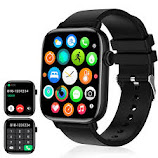In an era where our lives are lived more and more online, the distinction between connection and intrusion is blurring. Having read the Fast Company article "I'm 14, and I Quit Social Media", I couldn't believe how closely I could resonate with the insights of a teenage girl who had chosen to disconnect. A few years younger than me, she had exactly the same sense of tension, comparing oneself unfavorably, and constant pressure that I had experienced from using platforms such as Instagram and TikTok. Her words led me to question: What am I really getting out of social media, and what am I losing?
One thing I've realized is how much time I spend scrolling — not because I'm really interested in the content, but because it's become a habit, even an addiction. I caught myself that I don't normally feel better after being on social media; instead, I feel drained or dissatisfied. Watching carefully constructed glimpses of others' lives is making me feel like I'm not doing enough, not accomplishing enough, not living right. It's a strange paradox — social media is supposed to connect us, but it makes me feel more alone.
Beyond the cost to my emotional well-being, what's even more disturbing is that I don't own my own data. Reading Facebook Users Still Don't Know in The Atlantic made me see how little I actually know about what I've posted and how it's being used. I used to be like, "I have nothing to hide," but I never thought that my data — my likes, comments, and even the time I look at a post — is being harvested and sold. It's chilling to think about I'm not the consumer; I'm the product.Far more alarming was the news report about Facebook storing millions of its users' files on Amazon web servers. I've shared my phone number, email address, pictures, and individual opinions on various websites with no qualms. But why? And whom does it actually benefit? I don't feel any safer or closer, definitely.
I don't currently have my own personal website, but I do have active pages on Facebook, Snapchat, and Instagram. If a visitor did drop by my pages, they would quickly find my school, hometown, hobbies, and social groups. They might even assume my habits or personal problems based on what I've posted or commented on. That's a lot of information to give away for free — and for what? A couple of likes?
This has caused me to completely rethink my entire online presence. Going forward, I will be cleaning up my profiles, disabling unnecessary tracking, and being considerably more mindful about what I'm posting. I'm also considering taking breaks from social media on a regular basis, just in order to reboot.The truth is, unplugging — even briefly — may be the most freeing thing I can do. Social media may offer connection, but if it's at the cost of my privacy, peace of mind, and time, then perhaps it's time to disconnect in order to really reconnect — with myself, and the world around me.










